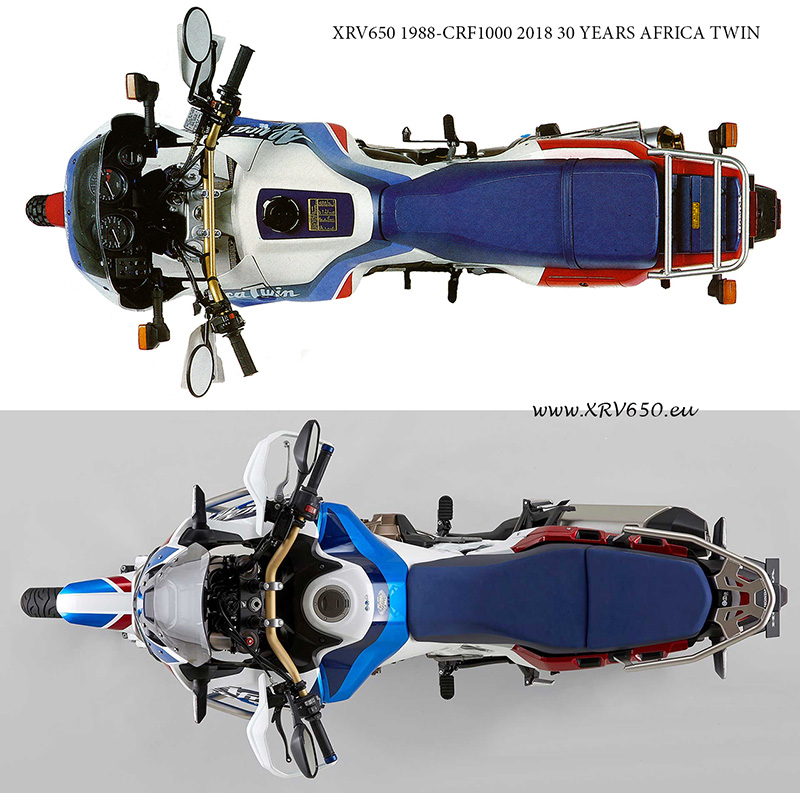Race Tech Emulators
The front suspension of the XRV, - (picture below) - is of the “damper rob fork” type. The damping / compression of this type of suspension can only be adjusted by changing the SAE number- (5, 7.5, 10, 15, 20) - of the oil contained in the fork tube. This limited adjustment could be efficient for a 1988 moto, but not for a 2002 one. Mother Honda was insisting to have this “prehistoric” concept even on the 2002 XRV, when the model got discontinued, probably due to the low cost. The 1991 XR and the next models were provided with controlled damping, named “Cartridge”.
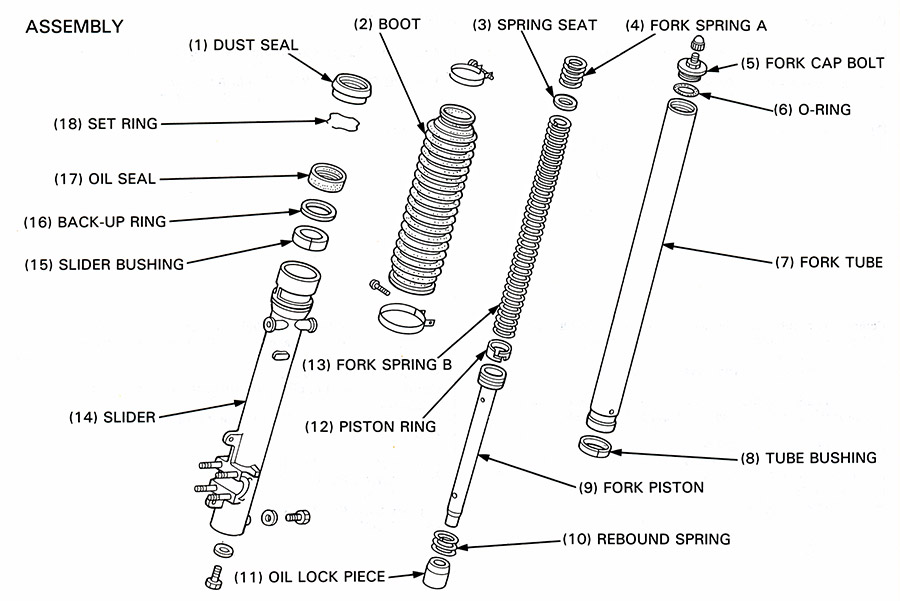
I had replaced my Africa’s fork springs with WP and having tested all the possible “oil brand – SAE number” combinations, I couldn’t reach a satisfactory result. Considering the whole fork replacement unacceptable, for aesthetic reasons, I decided to improve the existing one, by installing the “Race Tech emulators”.
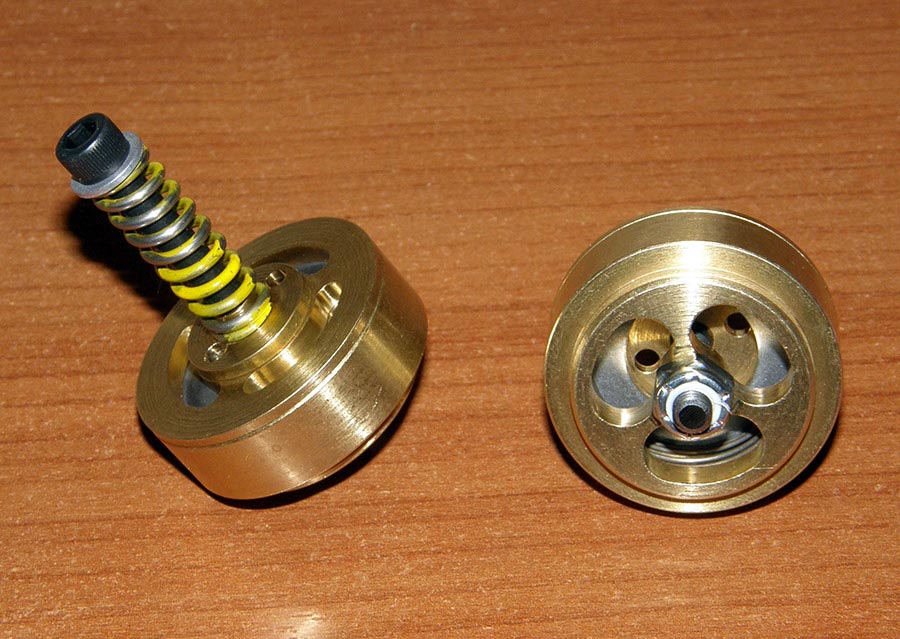
It’s supposed that they do what exactly the AT forks is missing (and not only), they adjust the dumping - compression and the rebound, by controlling the oil flow.
Race Tech, doesn’t make any emulators specifically for Africa Twin, but she’s got some universal, which fit in 43mm forks. A kind “Afican”-fellow from the www.xrv.org.uk, sent me the code numbers of the specific emulators, so in a few days I had them in hand, ordered from Amazon.
Below, I have uploaded the first 2 pages of the instructions, where Race Tech explains what the whole thing is about, also providing instructions for the installation, adjustments, etc.
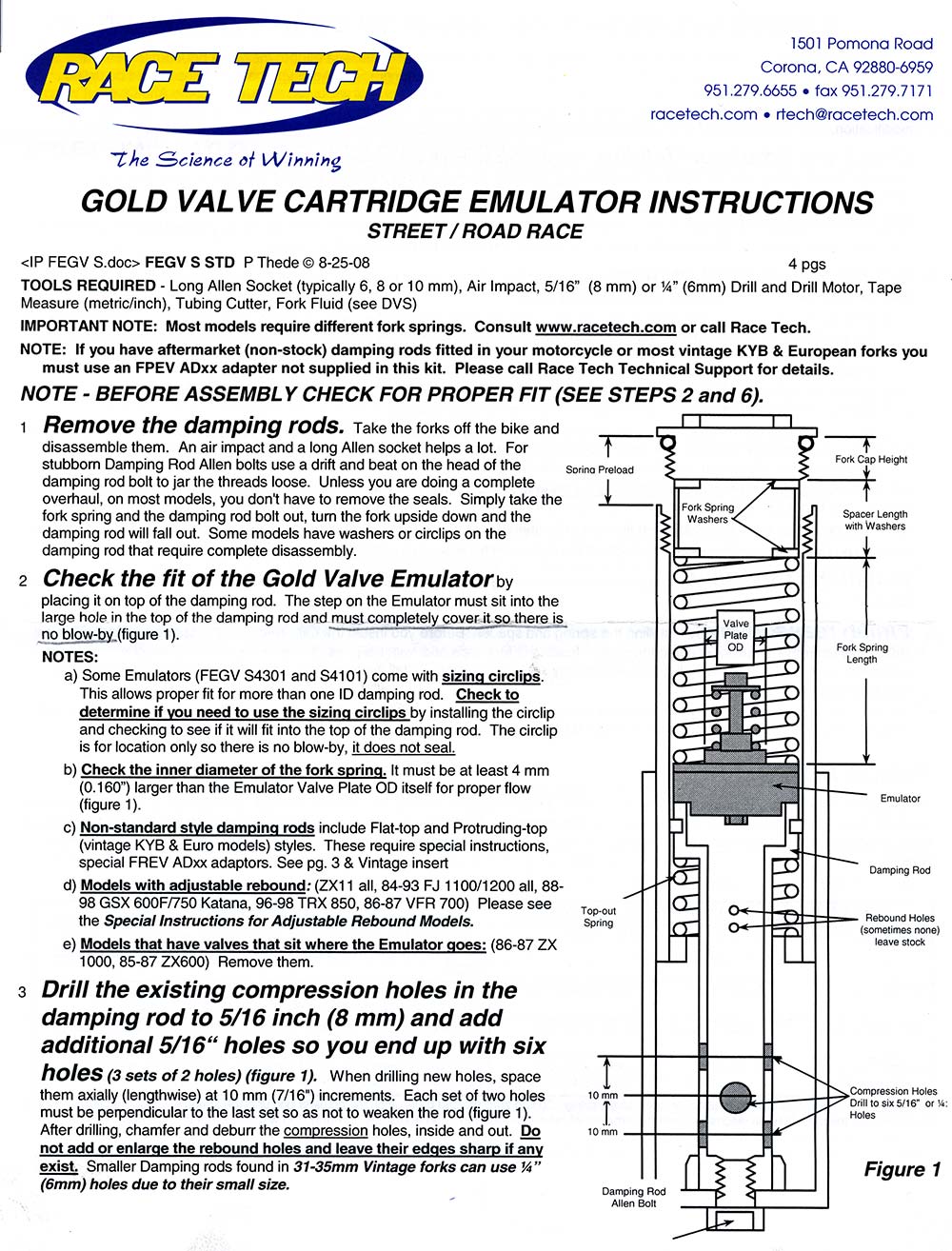
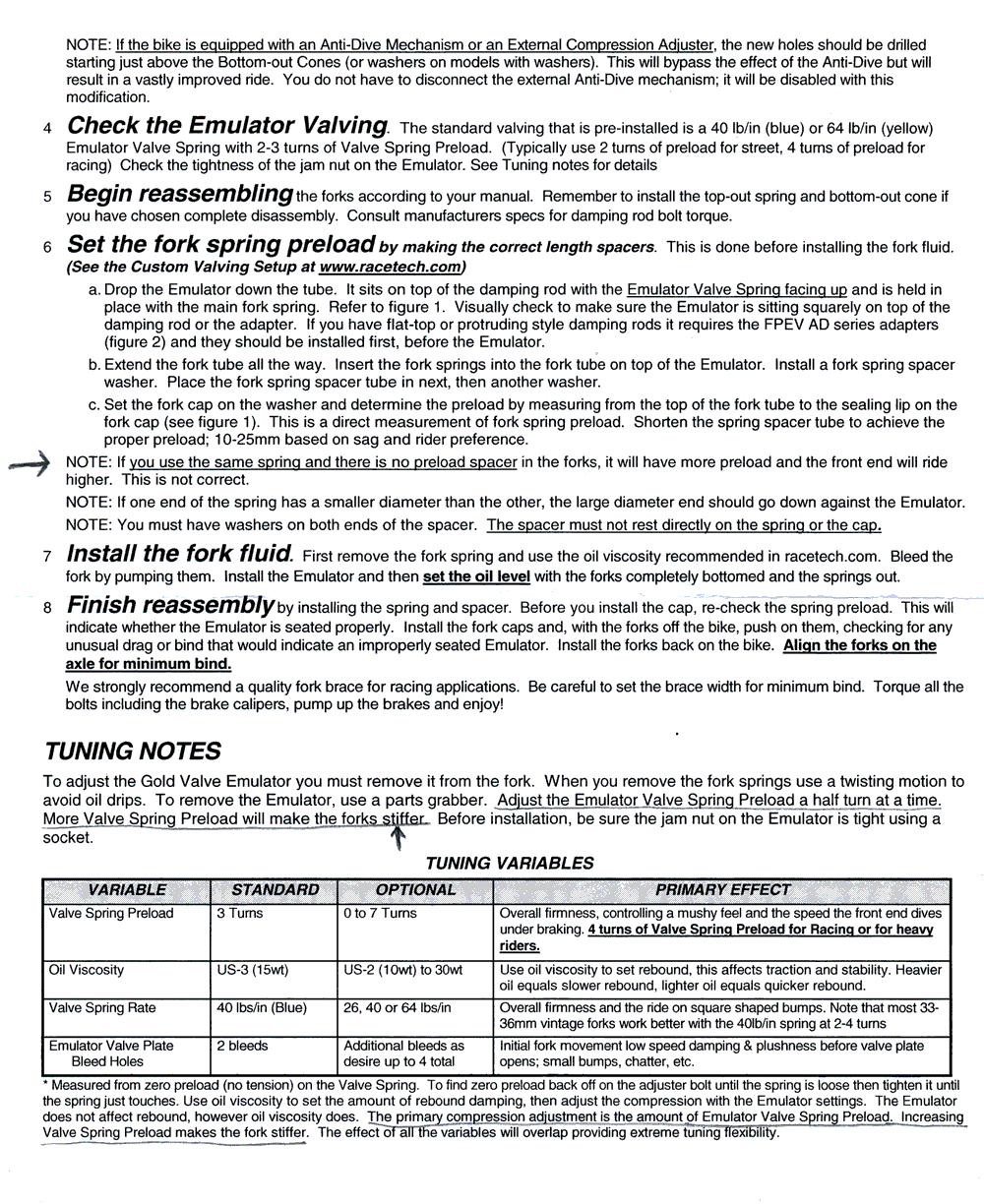
The whole front suspension was dismantled, cleaned and by the chance, oil–dust seals, O-rings and tube bushing, got replaced. In the picture below, it’s easy to understand the advantage of this type of fork. It’s the simplicity, which makes the maintenance easy, without the need of any special tools.
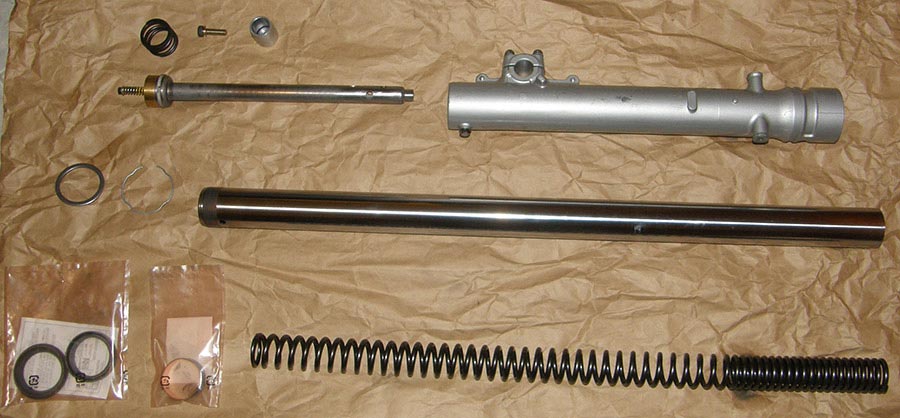
Let’s proceed with the dumping rod (fork piston), because all the suspension problems come from it. Only 2 simple modifications are required. The first is to drill the existing compression holes on it with an 8mm-drill bit, for the oil to pass through and to make 2 more of the same diameter, so you end up with 6 wholes (3 pairs) of 8mm in total. The exact place for the wholes to be made is described in the instructions.
The dumping rod (fork piston):
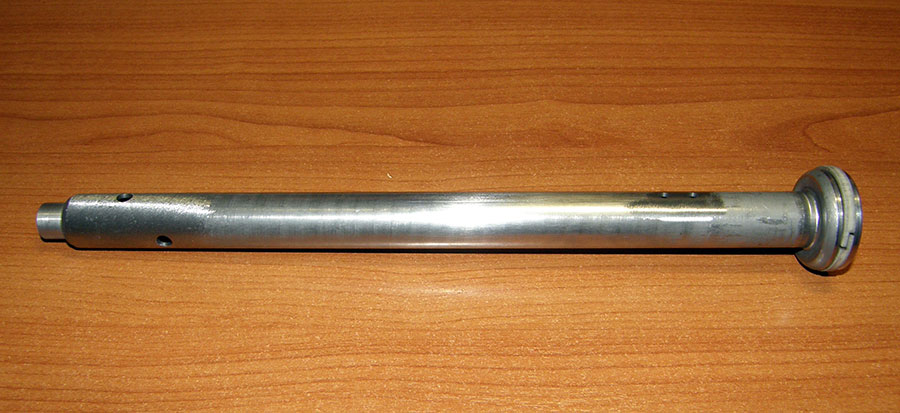
Before:
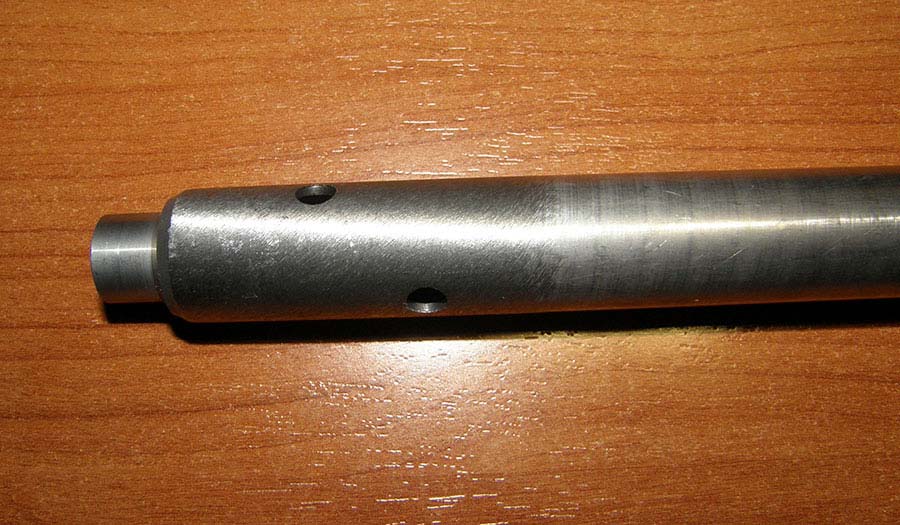
After:
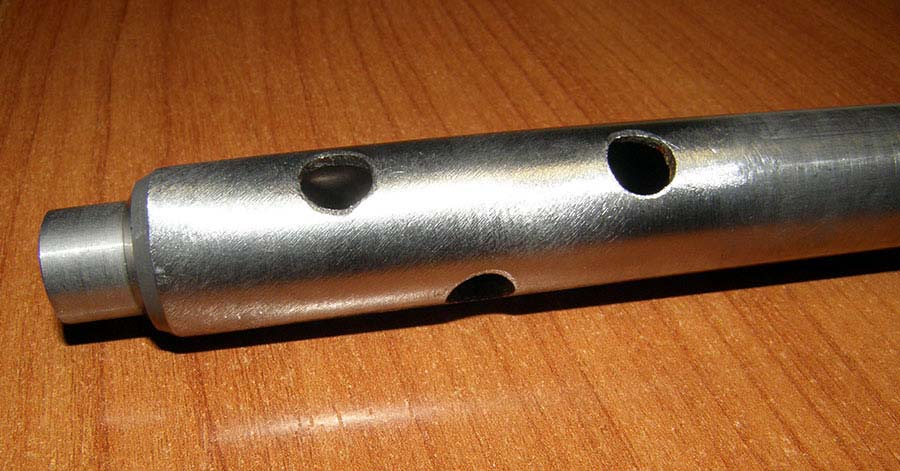
The second intervention has to be done on the top of the dumping rod (fork piston). It has to be filed slightly around the internal lip (red arrow), so the emulator can “sit” inside it.
ATTENTION: It has to sit (fit) without wedging, so in case you have to remove it for any further adjustment, it won’t be necessary to dismantle the whole fork again. It will simply drop by itself, if the fork is turned upside down. After the fork spring has contact with it, there is no reason to worry about; cause’s it can’t move at all …
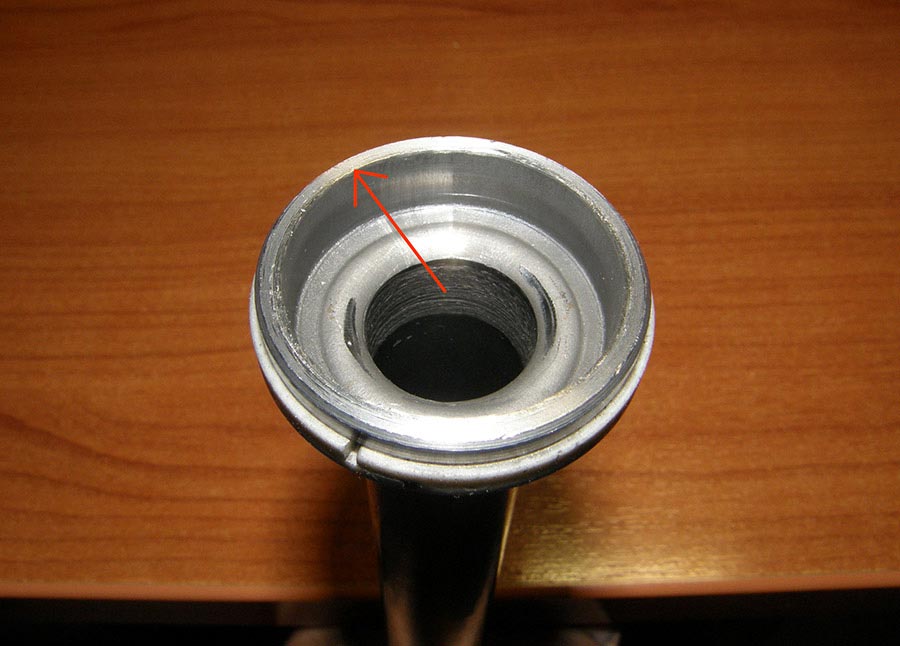
The reason why the internal lip has to be filed in order the emulator to fit in it, is that on the bottom, an O-ring has to be placed. An alternative solution is to find a thinner O-ring. In the picture below, you can see the metal O-ring inside the plastic bag and the red arrow indicates where it will be placed. Inside the plastic bag together with the O-ring is the different hardness spring provided by the Race Tech. I have used the standard spring, with the standard Race Tech adjustments.

So...
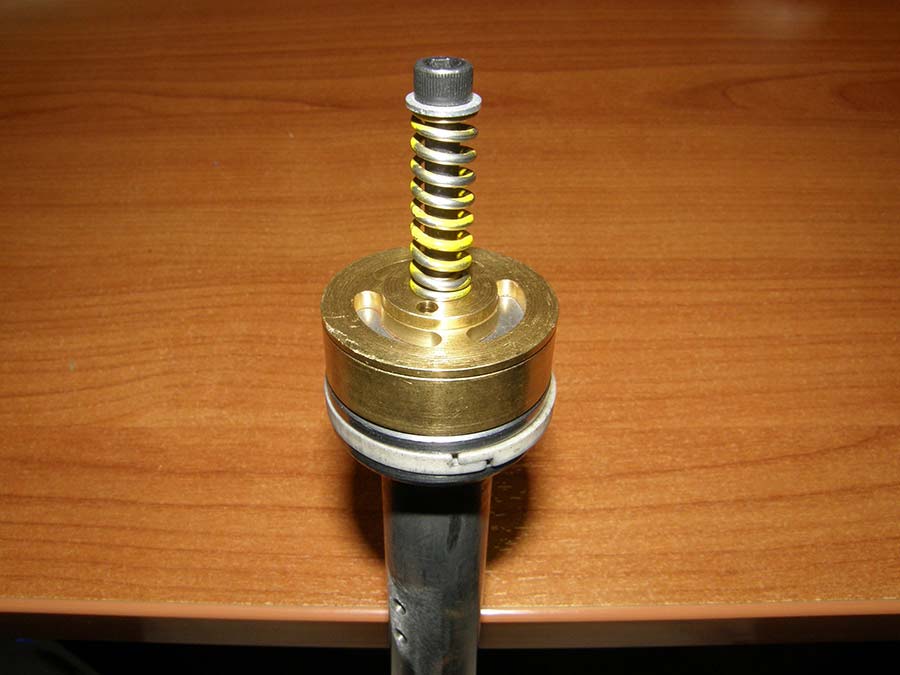
Another point to be carefully considered is the fork springs. With the emulator width given at 1.5 cm, is like the fork spring is pre-compressed by a 1.5 cartridge adaptor. Using the mother’s Honda fork springs, it won’t be any problem, ‘cause there too soft. For motos having cartridge adaptor, like SUZUKI Vstrom, Race Tech recommends to reduce the cartridge adaptor length, accordingly. In my case, I chose to replace the WP fork spring, with PROMOTO, considering them softer. Unfortunately, I couldn’t find any numbers for the fork spring hardness, so I counted on the riders’ experience of various sites.
Here is the label of the fork spring box.
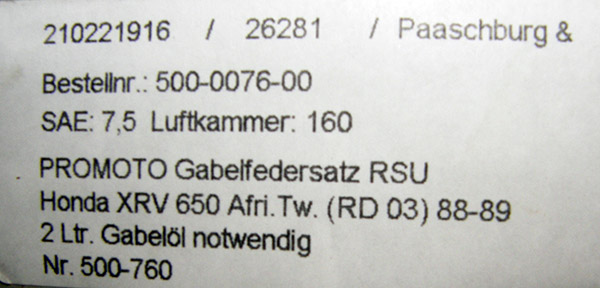
Besides the fork springs settings, I experimented also with the oil SAE type, as well as with the quantity. Finally I used Denicol SAE 6,5(5 and 7,5 suitable mixed) , with 16cm empty space from the upper lip of fork. WP gives this number (16 cm) for standard adjustment, (14 cm for soft – 18 cm for hard).
Well O.K.
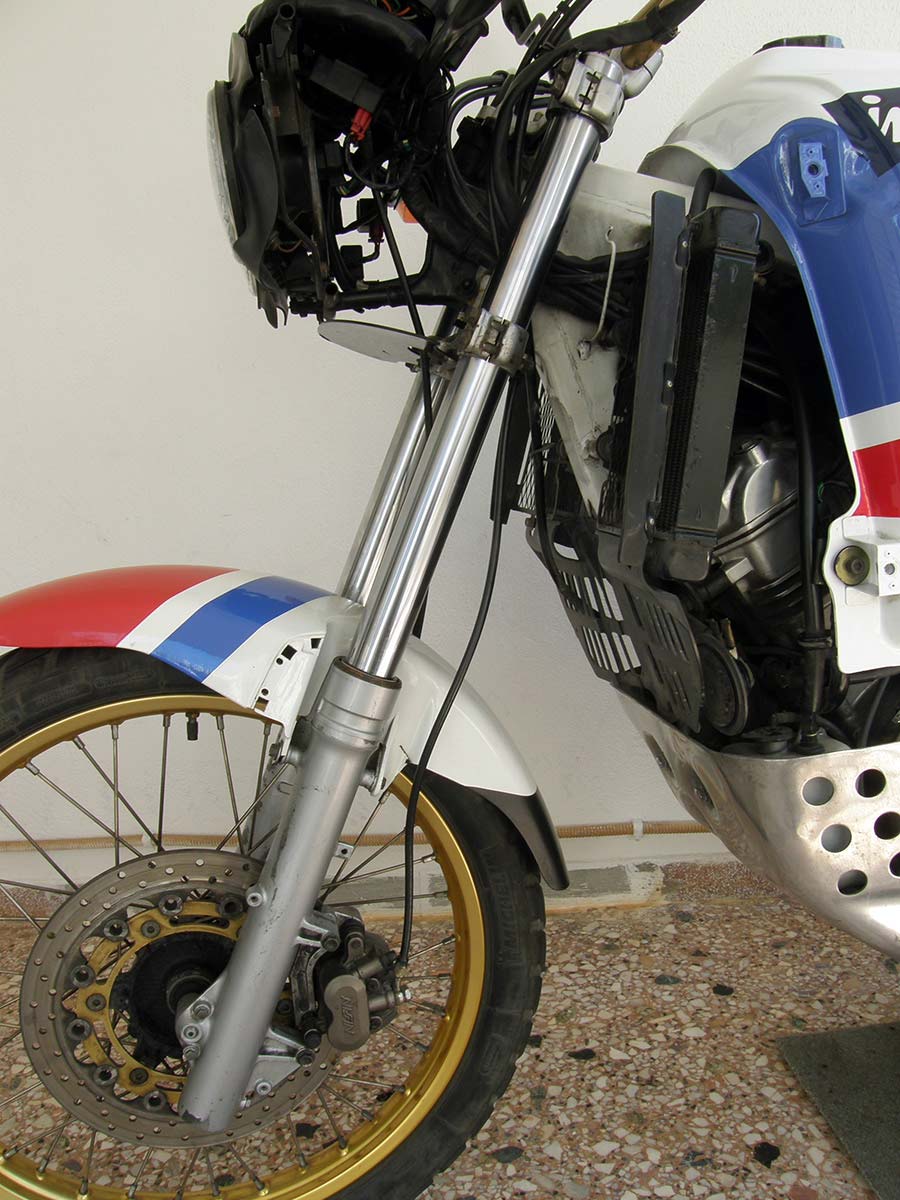
What my impressions are? The front suspension has fully changed, subsequently the whole moto’s behavior. No more unpredicted and rough rebounds, no more vibrations and no more looseness. She rebounds softly on any type of road I have tried her, fully predictable. She enters the turns and gets out exactly the way you tell her, giving an incredible felling of safety. At last the front suspension feels robust. But I have to concede, that in my case I got lucky, ‘cause the new front suspensions cooperates perfectly with the rear WP suspension. The result was higher of my expectations and this means the end of my investigations regarding the suspension.
M.M.






